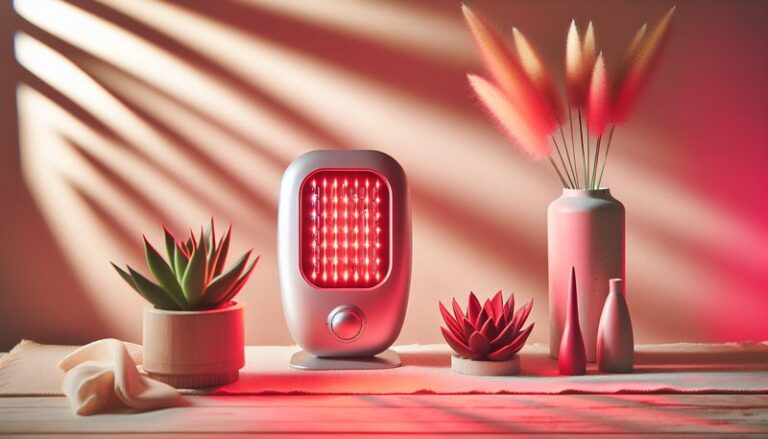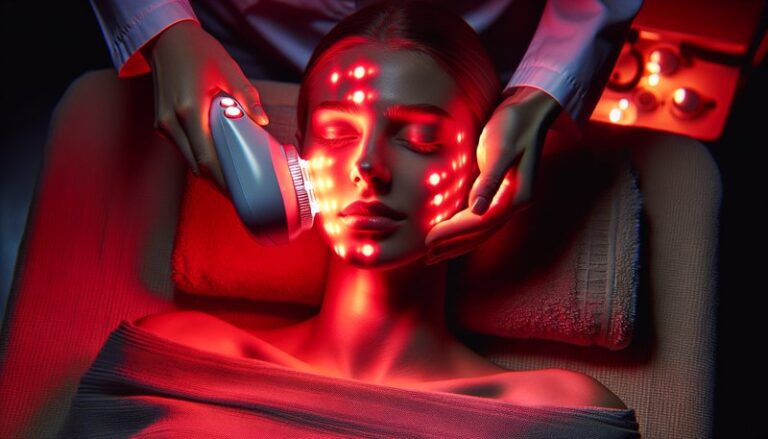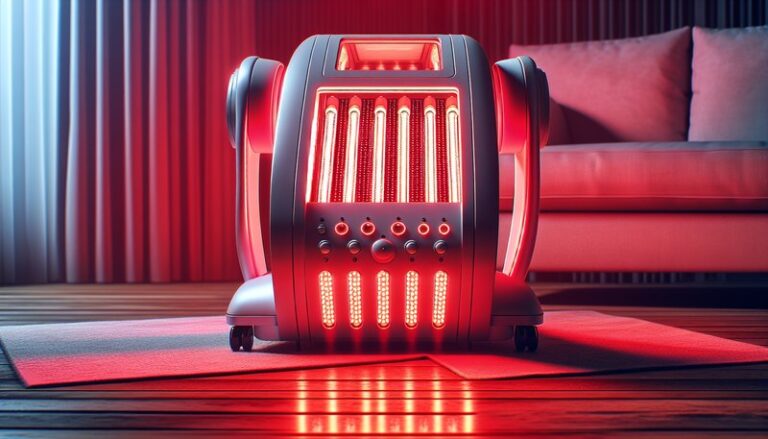How Does Red Light Therapy Work On Skin?
How Does Red Light Therapy Work on Skin?
Have you ever wondered how some people achieve radiant skin with minimal effort? The answer may lie in the innovative technology of red light therapy.
In this article, we will explore the mechanism of red light therapy, its benefits for skin health, and considerations for its use. Whether you’re seeking to improve conditions like acne or enhance your overall skin appearance, understanding this therapy can help you make an informed choice.
Key Takeaways
- Red light therapy utilizes specific wavelengths of light to promote skin healing and rejuvenation.
- It offers multiple benefits, including reducing inflammation, improving skin texture, and boosting collagen production.
- Considerations such as safety, treatment duration, and skin type are essential for maximizing results.
What is Red Light Therapy?
Red light therapy, also known as low-level laser therapy (LLLT), involves exposing the skin to red wavelengths of light, typically between 600 and 650 nanometers. This non-invasive treatment has gained popularity in both clinical and home settings for its potential skin benefits.
The therapy works by penetrating the skin to stimulate cellular processes. It promotes the production of adenosine triphosphate (ATP), which is crucial for energy transfer within cells, thereby enhancing metabolism and healing responses.
For more information, read Best Red Light Therapy Device?
In addition, red light therapy is thought to influence collagen and elastin production, substances that maintain the skin’s firmness and elasticity. This makes it appealing for those looking to combat signs of aging or skin damage from environmental stressors.
What are the Benefits of Red Light Therapy?
Red light therapy offers a range of advantages for skin health and beauty:
Read our exploration of Is Red Light Therapy Safe for Eyes?
Enhanced Skin Rejuvenation
Red light therapy has been shown to promote collagen synthesis, which can help reduce fine lines and wrinkles, leading to a more youthful appearance. Clinical studies indicate that regular use can result in visibly smoother skin.
Reduction of Inflammation and Redness
For those suffering from conditions like rosacea or eczema, red light therapy can help soothe inflammation and reduce redness. The therapy aids in the regulation of inflammatory markers in the skin, providing relief from discomfort.
Improvement of Acne and Scarring
Red light therapy can be effective in treating acne by targeting the bacteria responsible for breakouts and promoting healing. Additionally, its ability to stimulate collagen production can help minimize the appearance of acne scars.
Overall Skin Tone and Texture Improvement
Regular use of red light therapy may help improve overall skin tone, leaving it looking brighter and healthier. The therapy promotes better blood circulation, which nourishes the skin and enhances its texture.
Is it Possible to Self-Administer Red Light Therapy?
Yes, many individuals choose to self-administer red light therapy using devices designed for home use. However, understanding the proper technique and frequency of use is vital for achieving desired results.
What are the Advantages of Self-Administering Red Light Therapy?
- Convenience: Home devices allow you to incorporate therapy into your daily routine without scheduling appointments.
- Cost-Effective: Investing in a home device can be more economical in the long run compared to multiple professional sessions.
- Control Over Treatment: You can customize treatment times and frequencies according to your skin’s needs.
What are the Disadvantages of Self-Administering Red Light Therapy?
- Learning Curve: Proper device usage may take time to learn, and ineffectively using the device may yield suboptimal results.
- Initial Cost: High-quality red light therapy devices can require a significant upfront investment.
- Limited Professional Guidance: Without professional oversight, users might miss out on tailored treatment plans or adjustments based on skin response.
What are the Things to Consider Before Starting Red Light Therapy?
Several important factors should be taken into account before beginning red light therapy:
Skin Type and Conditions
Different skin types and conditions respond differently to red light therapy. Consulting with a dermatologist to determine compatibility with your skin type can optimize outcomes.
Device Quality and Specifications
Choosing a reputable device with the appropriate wavelength and intensity is crucial. Researching brands and reading reviews can guide you toward effective options.
Frequency and Duration of Treatment
Understanding how often and how long to use red light therapy is essential. Overuse can lead to diminished results; therefore, establishing a consistent yet moderate schedule is key.
What are the Alternatives to Red Light Therapy?
If red light therapy isn’t appealing or feasible for you, a variety of alternatives exist:
Microdermabrasion
This procedure exfoliates the skin to remove dead cells, promoting new skin growth. It’s effective for improving skin texture and minimizing scars, but it requires multiple sessions for substantial results.
Chemical Peels
Using acids to exfoliate the skin, chemical peels can improve various skin issues, including pigmentation and texture. They come in different strengths, and while they provide quick results, downtime may be needed for recovery.
LED Light Therapy
Similar to red light therapy, LED light therapy utilizes varying wavelengths to target specific skin concerns, including blue light for acne and yellow light for redness. It’s also available in both professional and home devices.
Conclusion: Is it Recommended to Try Red Light Therapy?
In summary, red light therapy demonstrates promising benefits for improving skin health, from reducing wrinkles to alleviating inflammatory conditions. While it can be self-administered easily at home, it’s essential to consider individual skin types, device quality, and treatment protocols. Consulting with a skincare professional can help tailor the treatment to meet your specific needs effectively.
Frequently Asked Questions
What does red light therapy feel like?
Most users report experiencing a gentle warmth during the treatment. It is generally painless and does not require any downtime.
How frequently should I use red light therapy for optimal results?
For best results, using red light therapy 2-3 times a week is often recommended, but this can vary based on individual skin conditions and device specifications.
Are there any side effects associated with red light therapy?
Red light therapy is considered safe with minimal side effects. Some individuals may experience slight redness or irritation immediately following treatment, but these effects typically resolve quickly.
Can red light therapy be used alongside other skin treatments?
Yes, red light therapy can often complement other skin treatments, including topical medications or procedures. However, consulting a dermatologist before combining treatments is wise to avoid adverse interactions.
How long does it take to see results from red light therapy?
Many users begin to see results in as little as four to six weeks with regular use, with continued improvement over time as collagen production increases.




